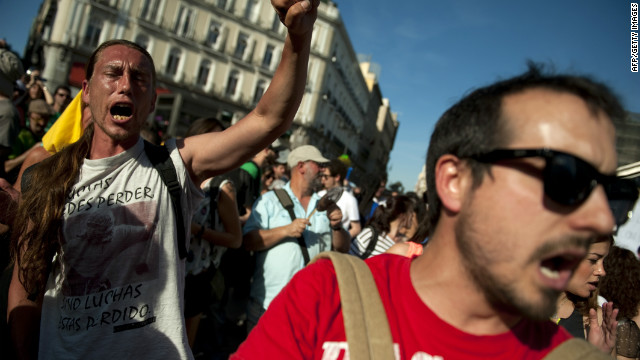Spain has finally asked for a bank bailout from its eurozone peers,
to weather the financial crisis that hampered its finances during recent
months.



Although Spain's Prime
Minister, Mariano Rajoy, has stressed that there are no austerity
conditions attached to it, the statement from the Eurogroup made clear
that supervision over the country's budget will be strengthened.
The budget deficit aims
may mean the Spanish government will implement further structural
reforms, such as a reducing the country's unemployment benefits, or
raising the retirement age.
Sandra León
As a result, we may see public disaffection shifting from the streets to the political arena.
Unlike other countries --
such as Greece, for example -- in Spain public disaffection with the
economic crisis has not yet had a significant impact on the country's
traditional political forces.
Instead, Spanish citizens
have mainly channeled their anger and frustration over austerity
measures through social mobilization, while the political landscape has
remained virtually the same.
Although there has been
shift in power -- the Popular Party (PP) took over after general
elections in November 2011 -- the political arena continues to be
dominated by the two largest parties, PP and the Socialist Party, PSOE.
The striking aspect of
the emergence of the Spanish indignados movement was that it came about
in a country which has, traditionally, had low levels of civic
engagement and social participation.
Spain's crisis has real estate roots
While the indignados have
been discredited by the right-wing mass media as being a marginal force
mainly followed by perroflautas (Spanish slang to describe wandering
minstrels), the movement -- which had its anniversary on May 15 -- has
shown no signs of fading away. Indeed, a majority of Spanish citizens
sympathize with its aims and support its goals.
Recent studies show the
indignados are not just a movement of the young and marginalized. Many
participants are middle-aged, highly-educated and employed, and a
majority of them consider their current financial situation relatively
good. At the same time, many share a concern about their future financial situation.
For a short period the
indignados managed to get a reform of the electoral system, that would
improve the chances of small parties to be represented in parliament, on
the policy agenda. But they have not yet achieved any significant
policy goal.
Now, some proposals to
improve democracy and control corruption have been pushed aside as focus
turns instead to the deteriorating economic situation. The movement's
current demands focus on the unbalanced distribution of economic costs
due to the austerity measures.
This does not mean that
the indignados have failed, as their most important success indicator is
the activation of the protest "muscle" in Spanish society, particularly
among the network of social organizations at the local level.

But if the bank rescue
results in further reductions of social welfare funds, or if it is a
prelude to the bailout of the state, the government risks unleashing
social protest in a way existing social movements may not be able to
channel.
Public discontent may
then shift from the streets to the political stage. This could ruin the
leverage of the traditional political forces and, in turn, the capacity
of the political system to manage the economic crisis.
No comments:
Post a Comment